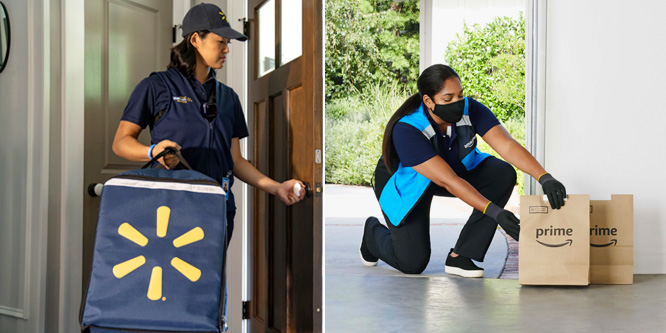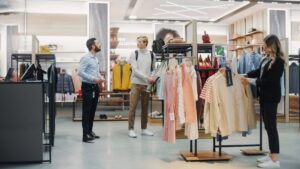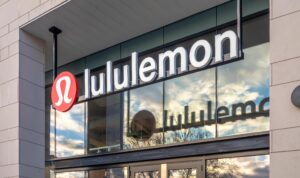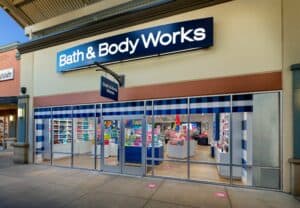
Photos: Walmart; Amazon
April 29, 2021
Will Americans open their garages and homes to Amazon and Walmart?
Amazon.com and Walmart are both planning to expand delivery services that give them access to the homes of customers.
Expansion of the services was likely sidetracked in the last year over safety concerns related to the spread of COVID-19. With millions of Americans getting vaccinated and some of the stress around the threat relieved, the two companies are looking to get closer to their customers than ever before.
Amazon announced that it is expanding its Key by Amazon In-Garage Grocery Delivery service to more than 5,000 cities and towns across the country. The service, which was originally announced in 2019, will now be made available to millions of eligible Prime members who order groceries from Amazon Fresh or Whole Foods.
Amazon will deliver orders, as the program’s name suggests, inside of customers’ garages. Drivers receive temporary, one-time access to a garage after the Amazon app confirms the driver’s identity and delivery route via multi-step authentication. Drivers are instructed to go no more than five feet inside the garage. Customers receive delivery notifications on their mobile device.
“Customers who tried Key In-Garage Grocery Delivery have loved the service, which is why we’re expanding it to everywhere Amazon offers grocery delivery,” said Pete Gerstberger, head of Key by Amazon, in a statement. “As customers look for more convenience in their daily lives, we’re excited to deliver another service that not only helps them save time, but provides peace of mind knowing that tonight’s dinner is safe in their garage and out of the weather.”
Walmart debuted its InHome delivery service in 2019 in the Kansas City, Pittsburgh and Vero Beach markets. The retailer has expanded the service in recent months to its home state of Arkansas as well as southeast Florida. It is expected to launch in Atlanta in July, Bloomberg reports.
Customers enrolled in InHome meet with their delivery drivers before receiving their first orders. Delivery associates use smart entry technology to enter the homes of customers and their actions are tracked through wearable cameras. While Walmart typically uses third-party couriers to deliver groceries, only employees are eligible to participate in training to work in the InHome program.
- Amazon Expands In-Garage Grocery Delivery to Prime Members in More Than 5,000 Cities and Towns – Amazon.com
- Walmart Expands Delivery to Your Fridge, Pandemic Be Damned – Bloomberg
- Are garages optimal delivery drop-off points? – RetailWire
- Will customers give Walmart the keys to their homes? – RetailWire
- Walmart to deliver groceries to temp-controlled smart boxes at customers’ homes – RetailWire
Discussion Questions
DISCUSSION QUESTIONS: Will Americans’ experiences during the pandemic and a return to life approximating pre-pandemic normalcy create the conditions for programs such as Key by Amazon and Walmart InHome to be successful? What further obstacles and opportunities do you see for the programs?
Poll
BrainTrust
David Naumann
Marketing Strategy Lead - Retail, Travel & Distribution, Verizon
Mark Price
Adjunct Professor of AI and Analytics, University of St. Thomas
Paula Rosenblum
Co-founder, RSR Research
Recent Discussions







People will be more open to the service as so many continue to work at home post-pandemic. The bigger question is whether the service will still have as much value if they are at home anyway.
Allowing Amazon and Walmart to deliver products in garages or in the home is a mixed bag for consumers. Some consumers will really enjoy the convenience and appreciate that their goods will not be at risk from “porch pirates.” However there is another group of consumers that are more cynical and are not comfortable with strangers entering their garage or home. This group will be a hard sell to convince them that it is safe.
Hmm. I’d rather give a known entity like Amazon or Walmart access to my garage than have them leave something on the porch in plain view. If there are issues there will be recourse for fixing. Especially as we return to work, this convenience will grow.
I don’t know who the people are who feel safe letting total strangers into their homes but I am not one of them. Forget that I get to meet the driver before receiving my first order, the answer is still a big, fat NO. Just because you can doesn’t mean you should. I don’t need anything that badly.
Yes, I remember this was the response last year when we discussed this topic. I also remember discussing a locker that was going to go on the side of a house which was a better idea that we all liked but it would have to match the house décor. While I appreciate the efficiency they are trying to provide, I am with most – I don’t want someone in my house that doesn’t live there, period.
I’m with you, Richard!
I think younger generations are very comfortable with this type of thing. Anyone who has lived in an apartment or shared community setting knows there are public spaces, shared spaces, and private spaces. This means this is a forward-looking investment that is not going to convince consumers who are used to working a certain way.
Rick, I am far, far from the younger generation and I would do this in a heartbeat. Why would I rather have a delivery sitting on the porch unattended than in the safety of my garage? If a problem develops, Amazon or Walmart will know exactly who made the delivery and when.
Great point Gene. Either might work for me for general merchandise (i.e. ambient temperature products), however for cooler and freezer products this is unlikely workable unless the customer is prepared to invest in a fridge/freezer to store the delivery pending the consumer returning home and moving their order to their “in-home” facilities.
Time and innovation will solve this challenge.
This has to be a logical evolution. We should expect mini-refrigerators as well – potentially subsidized by the retailers to lock the customers in.
The garage door locks may need an upgrade in most areas, particularly in homes older than 10 years. It is probably easy, but that is certainly a barrier. Of course, the drivers cannot be third party from Instacart/DoorDash or crowdsourced. At least initially, Walmart/Amazon are better off focusing on building trust with protocols built in to assure the same driver or requiring at least one face-to-face meeting with the driver, etc.
The idea of delivery into people’s houses is a good one. It overcomes the problem of people having to be home to take delivery of perishable products and of packages being left outside. However the barrier here will be the reluctance to let delivery drivers into homes and, especially, into fridges! I suspect there will be less reluctance with garage delivery if there is no, or locked, access to the main house. Ultimately, this really comes down to personal preference and I suspect opinions will remain very polarized.
“More convenient” is a huge driver in the relationship between any retailer and their customers these days. The pandemic put a huge exclamation point behind that. So the underlying logic of this program makes huge sense. But there are risks, just like any pioneering effort. As a customer I won’t be an early adopter here. I’ll watch and learn while the bumps in the road are figured out. But there is no doubt that this delivery mechanism will one day be widely embraced. And when the thinking extends beyond groceries, just how many different retailers is the homeowner going to give access to? I might be figuring out some kind of external locker rather than giving the world access to my garage.
I just checked and 63 percent of U.S. homes have garages, raising the question, “What about the other 37 percent?” Many live in apartment buildings, most without door people.
I would think twice about letting someone into my garage or the kitchen when no one is present at home. However I do think there is a future market for a mailbox for groceries – a secure opening from outside home that lets retailers have direct access to refrigerated storage inside – the kind of thing you see at libraries for after-hours book returns.
While many are still working from home this could well be a great time to start this and effectively control the demand. The approach makes a lot of sense because if you are out the likelihood is your car is not in the garage so there is space. In-garage security cameras will give further reassurance to customers – for Amazon this will not be helpful when consumers are already invested in devices that compete with Ring such as Google Nest and others – consumers may not want multiple different security ecosystems in their homes.
Someone like Google is hugely well equipped to provide a retailer an end-to-end service to enable this approach. Smart devices in-home are part of the picture but also real-time mapping and tracking of the delivery as well as universal connectivity are also needed.
I am with Georganne. And with my luck, I would forget I ordered the food that is placed only five feet inside the garage door, and smash the stash and get only mashed potatoes. Seriously, I am not a fan.
Here we go again. I’m not sure who’s going to be in favor of allowing strangers into homes and garages, but single females and people with pets or small children will give this idea a big thumbs down.
Am I the only one who remembers Streamline? That’s circa 1999 and people liked it then. They just couldn’t make money.
I remember! I also remember Faith Popcorn talking about outside lockers for dry cleaning sometime in the early ’90s. Was that Streamline?
I don’t think so.
I loved Streamline and was really unhappy when the service was discontinued. I did appreciate the outdoor refrigerator that they left behind at no charge.
We discussed the “Amazon Room” some time ago. If I recall, there was considerable push-back on the idea. That however will be the evolution and new homes will all eventually have a receiving room. It will just be an “of course” decision. And that “Amazon Room” won’t be just for Amazon orders, it will be for any delivery that comes, providing a record of who and what.
The program will take off exponentially. You only need one person in the neighborhood to try it and boast how convenient it was and soon almost all neighbors will be on board. Even if one is working from home, think of the convenience of not being bothered or interrupted to answer the door for a delivery. Like the mail, it goes in a box and can be brought in-home at any time.
I can certainly see a lot of discomfort with the concept in its current “raw form” (i.e.; let a “monitored stranger” step into my personal living space, even for a few seconds), but I can also see that discomfort having very different levels, for example my garage is fairly sterile and has a strong locking door that separates it from the living area. I may be more comfortable than someone with a garage full of valuables and easy access to the rest of the home.
This is simply a step in the iterative process of finding the most convenient way to get products into the hands of consumers, and it is clearly a step that involves very personal views. There are so many factors that go into how comfortable someone would be with this concept, and I fully expect that there will be innovation and iteration on the idea that drives the comfort level incrementally higher.
Until then, it is a very personal decision that some people will be very happy to opt in to while others will keep the locks tightly closed!
Consumer desire for convenience and freedom will make these programs successful.
The pandemic raised consumer expectations of prompt delivery and time savings. Now we expect retailers to cater to our needs. No longer tethered to home, we want to make up for lost time… just not in physical stores.
The biggest obstacle is earning consumer trust. On opposite ends of the continuum of trust, some shoppers will think, “Oh hell no!” to in-home delivery while others will gladly receive it. The biggest opportunity is for retailers to always deliver the goods with care to move consumers along that continuum of trust.
We’re in a fascinating era as we welcome smart tech and connected homes for efficiency, personalized service and smooth supply chains. Smart tech will offer visibility to boost consumer comfort and confidence in retailers.
10 years ago these questions were being asked: Will Americans ever buy groceries online? Will Americans ever get into a stranger’s car for a ride somewhere? Is it wrong to wear a mask when entering a convenience store or a bank? Things change and both people and retail evolve using the best technologies and safety measures possible to ensure that the end-consumer and team members feel safe and comfortable. There will be adopters who love the convenience of freshly delivered groceries which don’t only go “the last mile” but also “the last 20 feet.” Others – including most of my extended family – will never let a stranger into their homes. The key is to keep innovating and listen to the customer, understand their needs and use the right consumer data to inform how to evolve and explore new opportunities. This service may not be for everybody – but like Halal, Kosher or Gluten Free, it serves a unique customer need and could be incremental for those who do it correctly.
In the past year, as delivery service has expanded dramatically, theft of packages from front doors has also increased. Not only do consumers have concerns about their packages being stolen, but there is also additional risk associated with weather, particularly freezing.
Convenience oriented consumers are looking for a safe way to guarantee the security of their packages, and services such as these fit the bill. The critical pieces will be managing staff and ensuring security.
If the insight on this is that people fear their items will be stolen or damaged, then for those people, this will work. I think as smart home systems expand, facilitating things like this will get easier and be more accepted.
What’s worse? Letting the delivery be vulnerable to porch bandits or inviting an unaccompanied stranger into your garage? Probably the latter, because of supposed accountability, but perhaps it’s a better bet to trust your neighbors. I think the popularity of this feature will rest on the level of crime in the neighborhood.
The Key program is going to take time to prove it’s safe and trustworthy. Someone bringing my groceries into my home – and putting the items that need refrigeration into the refrigerator – is a convenient service. Is the typical customer willing to let strangers into their homes to do that? The feedback proves that those that are willing to do so are enjoying the service. But can it reach scale where it’s worth the investment and effort into the offer? Time will tell.
Key by Amazon and Walmart InHome — another awesome opportunity to get inside, no pun intended, of a customer’s head. Safety cameras are mounted on the heads of delivery people as safeguards to protect you the customer from theft. This reminds me of the “old wolf in sheep’s clothing” analogy, as coincidentally the cameras are also filming the inside of your garage. A home delivery safety technology is innocuous until it is not. Life within the walls of a home is private until it is not.
AI-enabled information gathering of day to day, hour by hour, minute by minute of private in-home conversations, every purchase made, consuming every digital aspect of one’s private life, now given freely by consumers to big tech in exchange for personal convenience. Has convenience transformed personal privacy and safety into a commodity?
The real issue is an invasion of privacy. Personally, I do not want strangers coming into my home or garage to delivery stuff. I suspect there are many others who feel the same. Put the package on the porch, and leave.